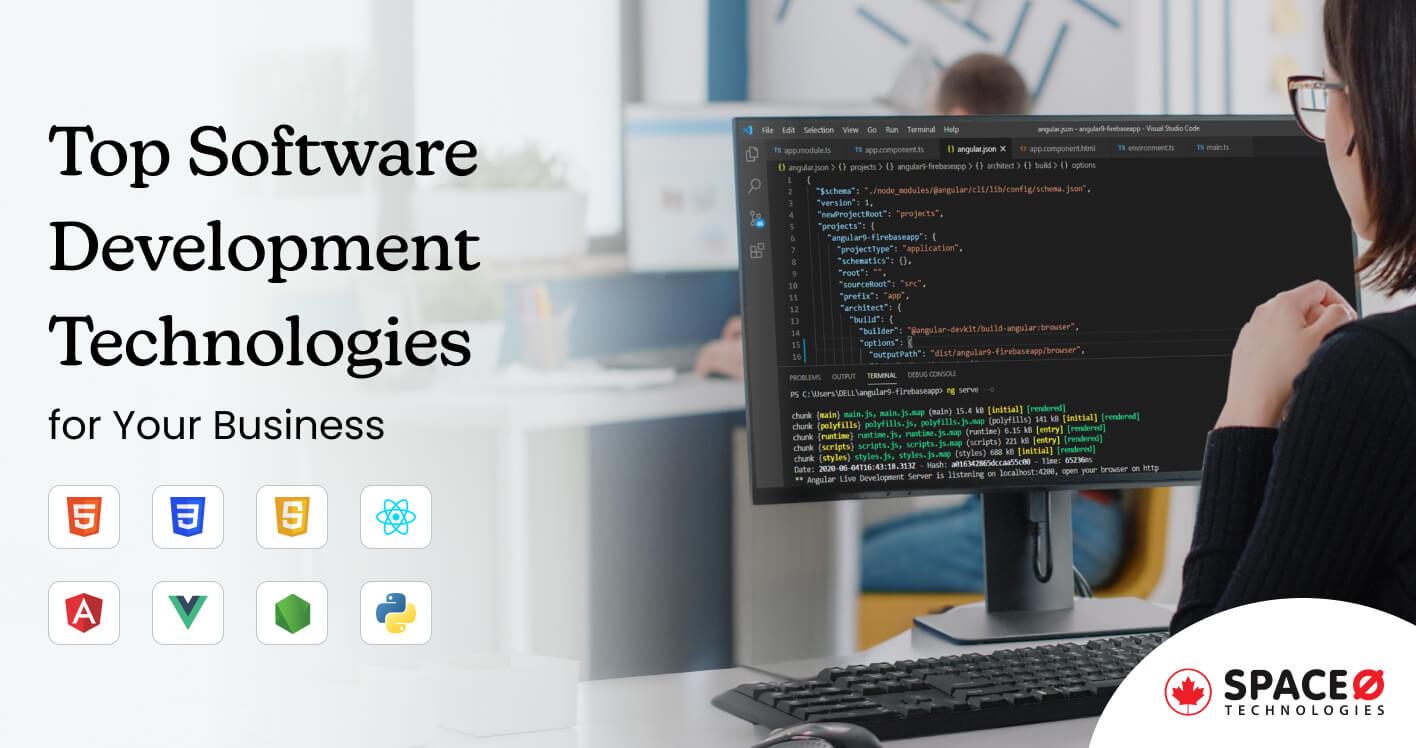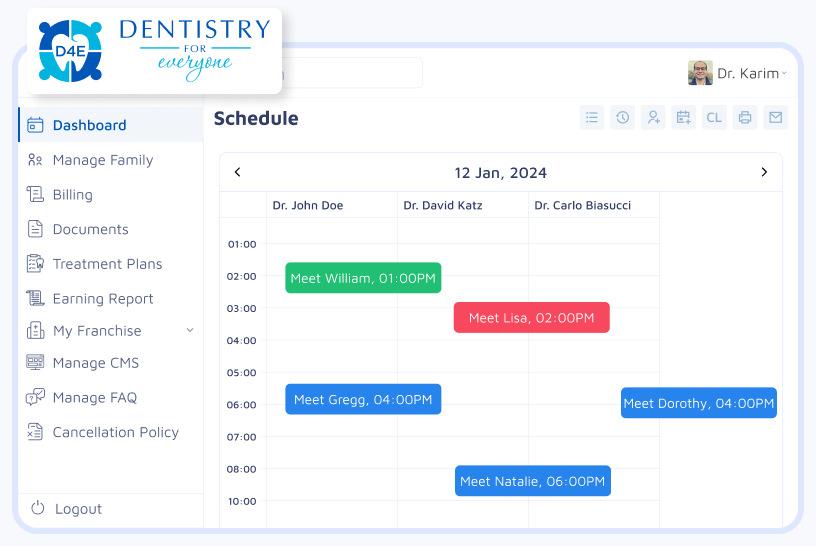
How to Build an AI Software System in 7 Steps from Scratch
Are you interested to learn how to create your own AI software system? Do you want to build a custom artificial intelligence software solution that best fits your business?
No wonder, artificial intelligence (AI) and machine learning (ML) software is powerful to transform business operations and helps to improve productivity, efficiency, and accuracy.
According to GlobalNewswire, the AI software market is estimated to reach $1094.52 billion by 2032. Being a business owner or entrepreneur, you surely want to leverage AI technology to boost up your business or startup.
That’s why you might be wondering about how to build an AI software, the timeline for AI development, and the team structure of AI engineers.
From this blog, you will get a complete clarity on building your own AI software system for your business.
Let’s get started.
Table of Contents
Let’s look at the complete process that you can follow to create AI software for your business.
How to Build AI Software in 7 Easily Steps
As a leading AI software development company, we know the thorough process of AI development.
Define an Objective of Your AI Project
The foundation of your AI project is the problem you want to resolve. You must know why you want to build an AI system.
For instance, if you are a financial institution and you want an accurate fraud detection system for your institute, your problem statement would be to determine the types of fraud to detect, the data sources to use, and the performance metrics to measure the fraud.
What if you don’t know a clear problem? In such cases, finding out what data to collect, what algorithms to use, and measuring the success of your project becomes difficult.
Based on your problems, the measurable goals and objectives of your AI project get decided. According to that, an SRS document of AI systems are created.
Further, based on your specific set of problems, the data collection process gets initiated.
Relevant Data Collection and Evaluation for Your AI Project
Data is important when building AI software because it helps to train AI software to learn patterns and make predictions.
Data collection is done from multiple sources, such as databases, APIs, web scraping, surveys, and sensors. Without proper data, AI systems cannot learn and make predictions accurately.
That’s why collecting data relevant to the problem statements becomes important. Data engineers collect structured data and unstructured data depending on your project requirements.
Once data collection is done, data preparation gets executed. To properly execute data preparation, choosing the right tech stack for your AI solution becomes essential as it influences the data preprocessing pipeline. You will learn about the tech stack in detail in the next step.
Data processing includes multiple steps that include, data cleaning, data transforming, and normalization of data.
- Data cleaning is a process of removing duplicate or irrelevant data to eliminate inconsistencies.
- Data transformation is converting data into a standardized format that is numerical or categorical data.
- Normalization refers to ensuring the data is consistent and follows a standard format.
Make sure to collect the relevant data for training your AI model. This helps you to get the expected results from the AI model you train. The next step comes here is choosing the right technology stack for your AI development.
Choosing The Best-fit Technology Stack for Your AI Project
Choosing a tech stack should be a careful consideration as it directly impacts the performance, scalability, and maintainability of your AI product.
How do you select the right tech stack for your project? Well, there are multiple factors that play an important role, such as considering project requirements, data characteristics, scalability, and security needs of your AI development.
From selecting the right AI programming language to the infrastructure of your AI system development, everything in between plays an important role.
As one of the leading AI software development companies, we have a strong understanding of the technology stack used to develop AI systems. Here is a list of the tech stack of information like the best AI programming languages, frameworks, extensive ML libraries, big data technologies, and other development tools.
Technology Description Programming languages - Python
- Java
- C++
- R
Frameworks - TensorFlow
- Keras
- PyTorch
- Caffe
- CNTK
- SparkMLlib
Big data technologies - Apache Hadoop
- Spark
- Cassandra
Artificial intelligence and machine learning platforms - Google TensorFlow
- PyTorch
- IBM Watson
- DataRobot
- RapidMiner
- Microsoft Azure
Cloud computing platforms - AWS
- Google Cloud Platform
- Microsoft Azure
Graphical user interfaces (IDE) - Jupyter Notebook
- Anaconda
- PyCharm
Deployment tools - Docker
- Kubernetes
- AWS Lambda
- Azure Functions
Using the mentioned technology stack, the AI software development team builds advanced computer systems for your business. Depending on your business requirements, the right combination of AI technologies is selected for your AI system project development.
Choosing the Right AI Algorithm for Your Project
Choosing the right AI algorithm results in the success or failure of your AI project. There are multiple different AI algorithms available for different types of problems.
According to your problem, the right AI algorithm is selected for your project development. During the selection of AI algorithms, neural networks are selected according to the problem you want to solve.
Neural networks, a subset of deep learning algorithms, are particularly useful for tasks such as image and speech recognition, natural language processing, and complex pattern recognition.
So, how are the suitable algorithms selected for AI systems development?
Selecting the right algorithm for your AI project depends on multiple factors, such as the type of problem you want to resolve, the availability of data, the accuracy and performance, and the resources and expertise required to build AI system project.
Technically, there are these four main types of AI algorithms available.
- Supervised learning
- Unsupervised learning
- Reinforcement learning
- Deep learning
Using the right algorithm helps in multiple ways, such as your solution being optimized for the specific problem and reducing the cost and timeline of your AI system development.
Having a deep understanding of the problem statement before developing an AI system is important. Because indirectly the problem statement, collection of data, and choosing an appropriate AI algorithm for a specific use case are connected.
Training and Fine-tuning the AI and ML Models for Your AI Project
The main goal of training a model is to create a model that accurately predicts or classifies new data based on the patterns learned from the training data. Training artificial intelligence models is a complex process and it also requires proper infrastructure.
The core steps followed by our AI and ML software development team to training machine learning models are as follows:
- Execution of the process of data preprocessing
- Defining the parameters for the training algorithm
- Feeding collected data into the algorithm
- Monitoring the algorithm’s performance
- Fine-tuning the algorithm for validation
To leverage maximum AI capabilities, having a proper infrastructure is important. The training process involves inputting data into artificial intelligence models, allowing learning of AI models based on the given data, and modifying the data models to get expected results.
Moreover, there are chances you need to add more data to your artificial intelligence models. Depending on the complexity of your project and results in you except the artificial intelligence models, training of AI models is done on the prepared data.
Development of Your Software and Integrating AI and ML Models
By using the agile software development life cycle, the AI software engineers team integrates trained AI models into your software development.
During the development of AI apps, architecture design, user interface design, front-end, and back-end of your AI software is done parallelly.
According to your requirements, the features and functionalities of your AI solution are coded by AI software developers. Moreover, third-party integrations APIs and SDKs are used to execute the final development of your artificial intelligence solution.
However, AI and ML models integrated into your software get continuously trained to improve your integrated model accuracy. In addition, developers validate artificial intelligence models to check if they are getting the expected results in the AI system.
The performance of your artificial intelligence software solution is optimized according to your business requirements at last. Once the development gets completed, testing and evaluation of your AI systems are done.
Testing, Deployment, and Monitoring of Your AI Solutions
Testing Stage:
With the help of QA engineers, the testing of your AI system solution is done. Using the software testing life cycle, the QA team performs the end-to-end testing of your artificial intelligence solution. The following are the steps of the software testing life cycle.
- Testing plan
- Writing test cases
- Executing test cases
- Reporting testing results
- Tracking defects
- Test closure
Using this process, the QA team ensures your artificial intelligence solution has no defects or issues. In addition, testing helps to know the accuracy, bias and fairness, performance, and feedback of your AI software.
All the results of your AI solution are validated before deploying AI-powered systems into production. So, there are no defects or issues with your AI application.
Deployment Stage:
To deploy your AI product, firstly, infrastructure is a setup that includes deciding on networking components and place of deployment either cloud or on-premise as per your requirements.
With tools like Kubernetes or Docker, the packaged AI model is deployed into your production environment.
For deploying AI systems, the Continuous Integration/Continuous Deployment approach is used. Using manual or automated tools, deployment of your AI system is executed into cloud platforms like GCP, AWS, or Microsoft Azure. After deployment, the AI development team offers continuous maintenance as required to continuously update data and models.
Monitoring and Updating the Model:
To get accurate results from your AI software, it becomes important to update and monitor your AI model’s accuracy and relevancy. That’s why the AI development team continuously monitors and updates your AI software with new data as required in the future.
This is the complete process of on how to build artificial intelligence software. Now, let’s learn about the timeline for AI development.
Want to Build Your Own AI Product?
Looking to validate your project requirements? Consult our experienced AI developers and get a complete roadmap for your project development.

As a leading software development company in Canada, we have successfully developed 300+ custom software and mobile solutions. We have skilled and talented software engineers who work on your idea to make it a reality. Check out some of our few AI-powered software solutions developed by us.
Recent AI-powered Solutions Developed by Us
How Much Time Does It Take to Build an AI System?
The tentative timeline to build AI software ranges from 4 to 9 months.
However, the timeline of building AI systems depends on multiple factors. The following are the mentioned factors that directly impact the overall timeline of development.
- The complexity of the problem you want to resolve
- The availability of data and quality of data
- The experience of the AI product development team
- Choosing the right AI algorithm
- The number of AI software engineers you hire
- Integration of third-party services or APIs
- The timeline required to test and evaluate AI/ML models
These are the key factors that directly impact to build AI software. In addition, here is a table that provides proper bifurcation on the timeline of developing AI product or solution.
| Stage to Build AI Software | Approximate Timeline |
|---|---|
| Problem Definition and Project Planning | 2 – 4 weeks |
| Data Collection and Preparation | 4 – 12 weeks |
| AI Model Development | 8 – 16 weeks |
| Testing and Evaluation of AI Software | 4 – 8 weeks |
| Deployment and Maintenance | Ongoing |
Remember the mentioned timeline is general to give you an idea. The actual time to create an AI software depends on multiple factors, such as the expertise of your AI software engineers, the location of developers you hire, and the desired level of your AI development.
Now, let’s learn about the team structure who are responsible to build AI software solution. This way, you get an idea of how the AI development team is different from the traditional software development team.
Comprehensive AI Software Development Team Structure
Here are the roles of different professionals involved in an AI software development team structure. Let’s look at each profile.
Business Analysts
A business analyst works to analyze business processes, and systems, identify areas of improvement and propose solutions according to your business problems. Business analysts collect requirements, documentation, develop use cases and define your business objectives.
UX/UI Designers
UX/UI designers are responsible for creating a user interface and experiences for your AI project. Designers ensure to create an attractive, intuitive, and easy-to-use user interface for your AI software project.
Data Scientists
When you want to develop any AI system, the role of data scientists is very important. A data scientist directly deals with the field of data science of your business which will be used to train artificial intelligence models. The primary role of data scientists is to collect, process, clean, and analyze data from your building and training models.
Machine Learning Engineers
ML engineers closely work with data scientists for developing machine learning algorithms, designing, and implementing data pipelines. The primary role of machine learning engineers design, develop ML models, and as well as build and deploy machine learning models into software solutions.
AI Developers
Software developer’s role is to develop software applications and systems according to business requirements that include AI capabilities by integrating artificial intelligence models and algorithms. This way, software developers code the software application from scratch and then integrate the AI/ML models.
DevOps Engineers
DevOps engineers closely with software developers, quality assurance engineers, and designers to create and manage automated testing and deployment systems. In short, DevOps engineers are solely responsible for deploying machine learning and artificial intelligence models into production environments.
Project Managers
The role of project managers is to completely manage and control your AI product development. A project manager handles the project resource, budgets, and progress of your AI software project development. Project managers work to ensure that your AI project meets your business goals and objectives.
Data Analysts
The role of data analysts is to collect, clean, process, and analyze data of your business for accurately developing machine learning models. Data analysts closely work with data scientists and machine learning engineers for ensuring the ML models get trained on high-quality datasets.
This is the core team of the AI software development team. All these different professionals closely work with each other to develop a high-quality and effective AI software solution.
Looking to Develop AI Software Solution?
Let’s talk. We have a team of AI software developers who have a strong understanding of AI and ML technologies.
Are you looking for more information on AI software development? Check the next section of the FAQ.
FAQ Related to AI Software Development Process
Which are the core components of artificial intelligence?
Here is the list of core components related to artificial intelligence that allows machines to think like a human brain.
- Machine learning
- Natural language processing
- Computer vision
- Robotics
- Expert systems
What are the benefits of developing an AI software solution?
These are the benefits you get by developing an AI software system for your business.
- Improve the efficiency of your overall business operations
- Save costs associated with errors, inefficiencies, and labor
- Increase your customer satisfaction by providing personalization
- Gain a competitive advantage in your business
- Get new data insights for your business growth
How much does AI software development cost?
The average cost of developing an AI software solution range from $15,000 to $50,000. However, there are multiple factors that directly impact the costs of AI software product development. Here is the list.
- Type of AI software development
- Data collection and preparation
- Location of AI developers and scientists
- Hourly rates of AI developers and data engineers
- AI features and functionalities
- Complexity of your AI product
Let’s Develop Your AI Software Solution
In this blog, you have learned about the complete process of building an AI software solution, approximate timeline, and AI software development team. As you see, the process of developing AI software is complex and long. Therefore, hiring a professional and experienced team of AI software developers can help you to achieve your expected outcomes.
If you are looking to develop your own AI software solution, let’s talk. We are a leading AI software development company having a team of experienced software developers, designers, and QA engineers. Describe your requirements to us and get your AI software development started.
Editor's Choice

Cost Optimization in Software Development: Top 8 Strategies That Work

Top Software Development Technologies for Your Business

Custom Software vs Off-the-Shelf: Making the Right Choice for Your Business
All our projects are secured by NDA
100% Secure. Zero Spam
*All your data will remain strictly confidential.
Trusted by


Bashar Anabtawi
Canada
“I was mostly happy with the high level of experience and professionalism of the various teams that worked on my project. Not only they clearly understood my exact technical requirements but even suggested better ways in doing them. The Communication tools that were used were excellent and easy. And finally and most importantly, the interaction, follow up and support from the top management was great. Space-O not delivered a high quality product but exceeded my expectations! I would definitely hire them again for future jobs!”

Canada Office
2 County Court Blvd., Suite 400,
Brampton, Ontario L6W 3W8
Phone: +1 (437) 488-7337
Email: sales@spaceo.ca






